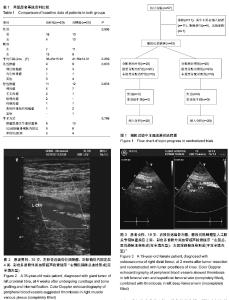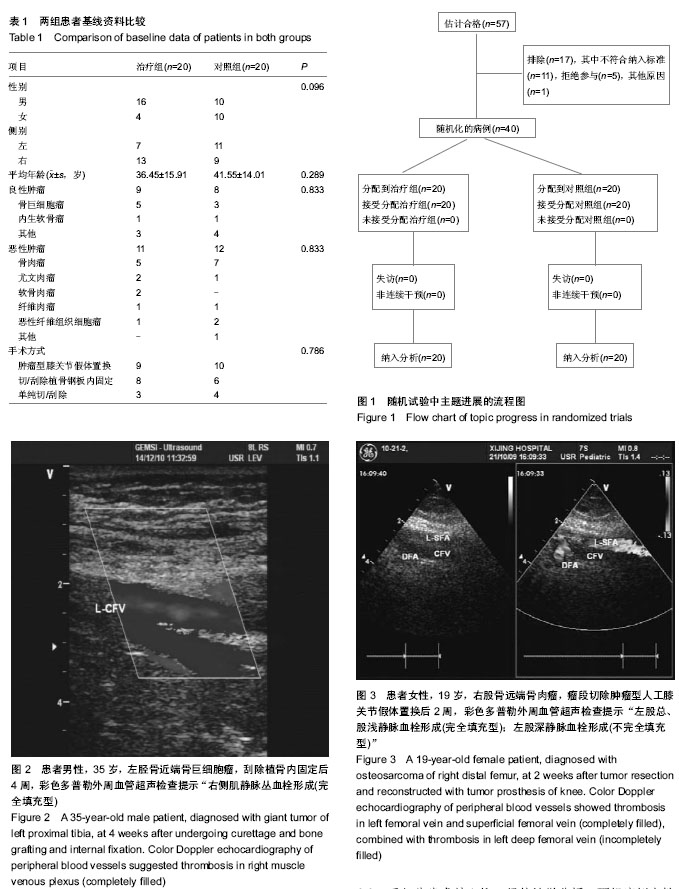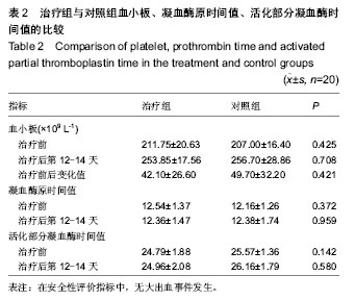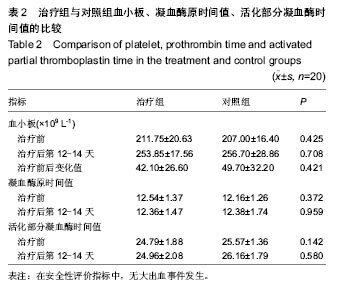| [1] Hirsh J, Dalen J, Guyatt G,et al.The sixth (2000) ACCP guidelines for antithrombotic therapy for prevention and treatment of thrombosis. American College of Chest Physicians.Chest. 2001;119(1 Suppl):1S-2S.
[2] Warwick D.Prevention of venous thromboembolism in total knee and hip replacement. Circulation. 2012;125(17):2151- 2155.
[3] Geerts WH, Bergqvist D, Pineo GF,et al.Prevention of venous thromboembolism: American College of Chest Physicians Evidence-Based Clinical Practice Guidelines (8th Edition). Chest. 2008;133(6 Suppl):381S-453S.
[4] 纪泉,赵立连,张耀南,等.人工关节置换术与深静脉血栓形成[J]. 中华创伤骨科杂志, 2006, 8(6): 573-576.
[5] Korte W.Cancer and thrombosis: an increasingly important association.Support Care Cancer. 2008;16(3):223-228.
[6] Khorana AA.Venous thromboembolism prevention in cancer outpatients.J Natl Compr Canc Netw. 2013;11(11): 1431-1438.
[7] Lip GY, Chin BS, Blann AD.Cancer and the prothrombotic state.Lancet Oncol. 2002;3(1):27-34.
[8] Khorana AA, Francis CW, Culakova E, et al. Thromboembolism in hospitalized neutropenic cancer patients.J Clin Oncol. 2006;24(3):484-490.
[9] Bergqvist D, Caprini JA, Dotsenko O,et al.Venous thromboembolism and cancer.Curr Probl Surg. 2007;44(3): 157-216.
[10] Couban S, Goodyear M, Burnell M,et al.Randomized placebo-controlled study of low-dose warfarin for the prevention of central venous catheter-associated thrombosis in patients with cancer.J Clin Oncol. 2005;23(18):4063-4069.
[11] 张鸿彬,王晓毓,姜佳明,等.恶性肿瘤中心静脉置管并发血栓22例分析[J].现代肿瘤医学,2009, 17(7):1339-1340.
[12] 王喆,张云亭,郭志.恶性肿瘤与静脉血栓形成关系的研究进展[J].中国肿瘤临床, 2008, 35(24): 1429-1431.
[13] 时德.下肢深静脉血栓形成的危险因素和预防措施[J].中国医刊, 2011, 46(10): 88-91.
[14] 姚佳春,王鹏.恶性肿瘤并发下肢深静脉血栓形成5例[J].中国中医药咨讯,2009,1(5):92.
[15] 林莉,徐建明,王岩,等.恶性肿瘤合并静脉血栓形成35例临床研究[J].临床肿瘤学杂志,2010,15(2):153-156.
[16] 王绍霞.恶性肿瘤并发静脉血栓的原因分析及防治干预[J].中医学报,2010,25(4): 622-623.
[17] 牛李敏,付蕾,王峰,等.深静脉血栓形成对恶性肿瘤患者预后的影响及危险因素[J].郑州大学学报:医学版, 2012,47(3):401-403.
[18] 李伟栩,叶招明,杨迪生,等.肿瘤型假体重建膝关节周围原发性肿瘤切除后骨缺损[J].中华外科杂志, 2007, 45(10): 665-668.
[19] Caprini JA.Thrombosis risk assessment as a guide to quality patient care.Dis Mon. 2005;51(2-3):70-78.
[20] Maynard G, Jenkins IH, Merli GJ.Venous thromboembolism prevention guidelines for medical inpatients: mind the (implementation) gap.J Hosp Med. 2013;8(10):582-588.
[21] Wickham N, Gallus AS, Walters BN,et al.Prevention of venous thromboembolism in patients admitted to Australian hospitals: summary of National Health and Medical Research Council clinical practice guideline.Intern Med J. 2012;42(6): 698-708.
[22] Piazza G, Nguyen TN, Morrison R,et al.Patient education program for venous thromboembolism prevention in hospitalized patients.Am J Med. 2012;125(3):258-264.
[23] Semchuk WM, Sperlich C.Prevention and treatment of venous thromboembolism in patients with cancer.Can Pharm J (Ott). 2012;145(1):24-29.
[24] Lippi G, Favaloro EJ, Cervellin G.Prevention of venous thromboembolism: focus on mechanical prophylaxis.Semin Thromb Hemost. 2011;37(3):237-251.
[25] 中华医学会骨科学分会.中国骨科大手术静脉血栓栓塞症预防指南[J].中华骨科杂志,2009,29(6):602-604.
[26] 侯晓茹,狄柯坪.恶性肿瘤患者下肢深静脉血栓形成的早期诊断与防治[J].白求恩军医学院学报, 2007, 5(1): 7-8.
[27] Nay Min Tun,Thein Hlaing Oo.Prevention and Treatment of Venous Thromboembolism with New Oral Anticoagulants: A Practical Update for Clinicians. Thrombosis. 2013; 2013: 183616.
[28] 李小鹰,王辰.内科住院患者静脉血栓栓塞症预防的中国专家建议[J].中华结核和呼吸杂志, 2009, 32(1): 3-8.
[29] Hogg K, Carrier M. Prevention and treatment of venous thromboembolism in patients with cancer.Ther Adv Hematol. 2012 ;3(1):45-58.
[30] Gafsou B, Samama CM.Prevention of venous thromboembolism in surgical patients.Rev Prat. 2011;61(9): 1221-1228.
[31] 李恒,隋福革,汪群,等.应用利伐沙班预防关节置换术后深静脉血栓形成[J].中国现代医生, 2011, 49(16): 72-73.
[32] Duggan ST, Scott LJ, Plosker GL.Rivaroxaban: a review of its use for the prevention of venous thromboembolism after total hip or knee replacement surgery.Drugs. 2009;69(13): 1829-1851.
[33] Albertsen IE, Larsen TB, Rasmussen LH,et al.Prevention of venous thromboembolism with new oral anticoagulants versus standard pharmacological treatment in acute medically ill patients: a systematic review and meta-analysis.Drugs. 2012;72(13):1755-1764.
[34] Maratea D, Fadda V, Trippoli S,et al.Prevention of venous thromboembolism after major orthopedic surgery: indirect comparison of three new oral anticoagulants.J Thromb Haemost. 2011;9(9):1868-1870.
[35] Reis A.Prevention and treatment of venous thromboembolism: the place of new oral anticoagulants.Rev Port Cardiol. 2012; 31 Suppl 1:45-50.
[36] Borris LC.Rivaroxaban and dabigatran etexilate: two new oral anticoagulants for extended postoperative prevention of venous thromboembolism after elective total hip arthroplasty. Arch Orthop Trauma Surg. 2010;130(5):583-589.
[37] Turpie AG, Lassen MR, Eriksson BI,et al.Rivaroxaban for the prevention of venous thromboembolism after hip or knee arthroplasty. Pooled analysis of four studies.Thromb Haemost. 2011;105(3):444-453.
[38] 唐辉,黄金亮,李川,等.利伐沙班对骨科大手术后深静脉血栓预防作用的研究进展[J].国际外科学杂志, 2011, 38(11): 778-781.
[39] Stevenson M, Scope A, Holmes M,et al.Rivaroxaban for the prevention of venous thromboembolism: a single technology appraisal.Health Technol Assess. 2009;13 Suppl 3:43-48.
[40] Kwong LM.Therapeutic potential of rivaroxaban in the prevention of venous thromboembolism following hip and knee replacement surgery: a review of clinical trial data.Vasc Health Risk Manag. 2011;7:461-466. |



